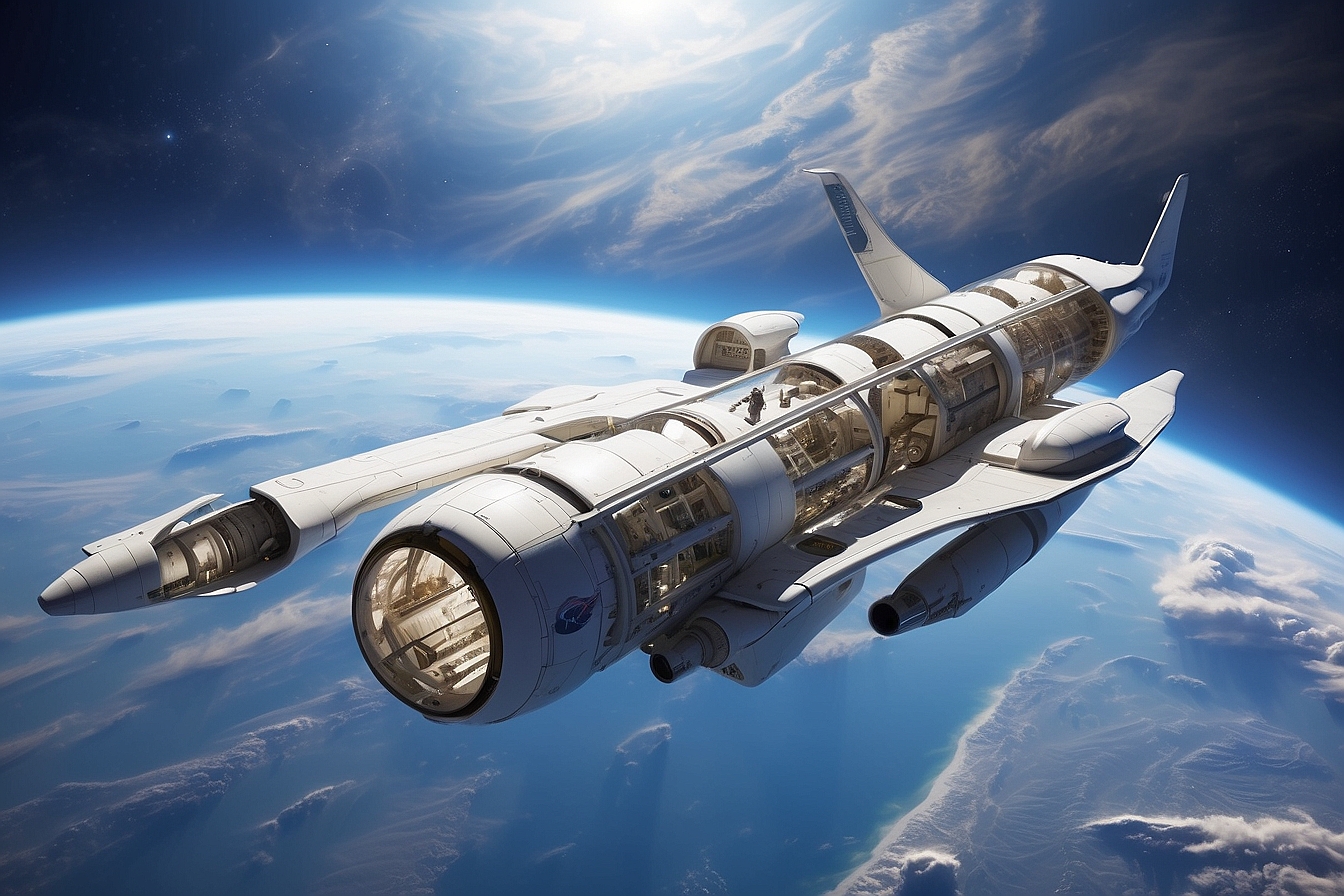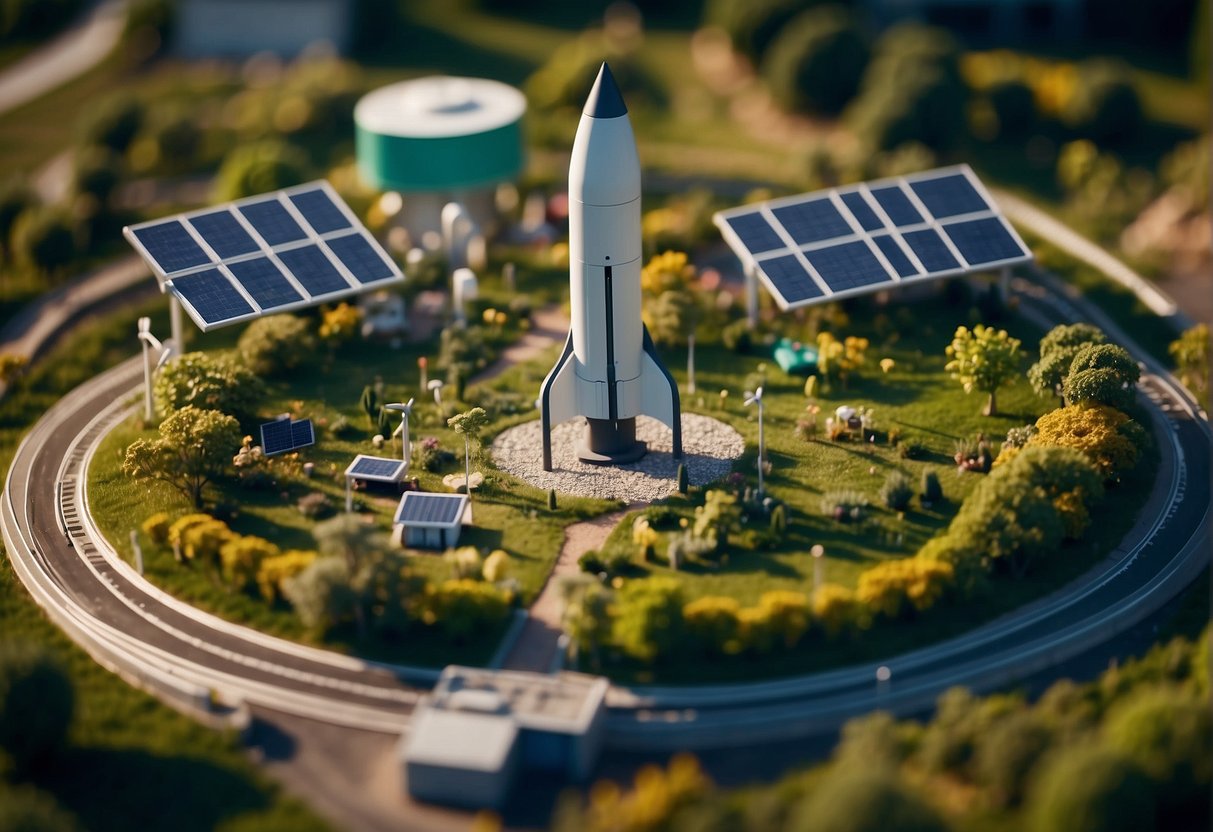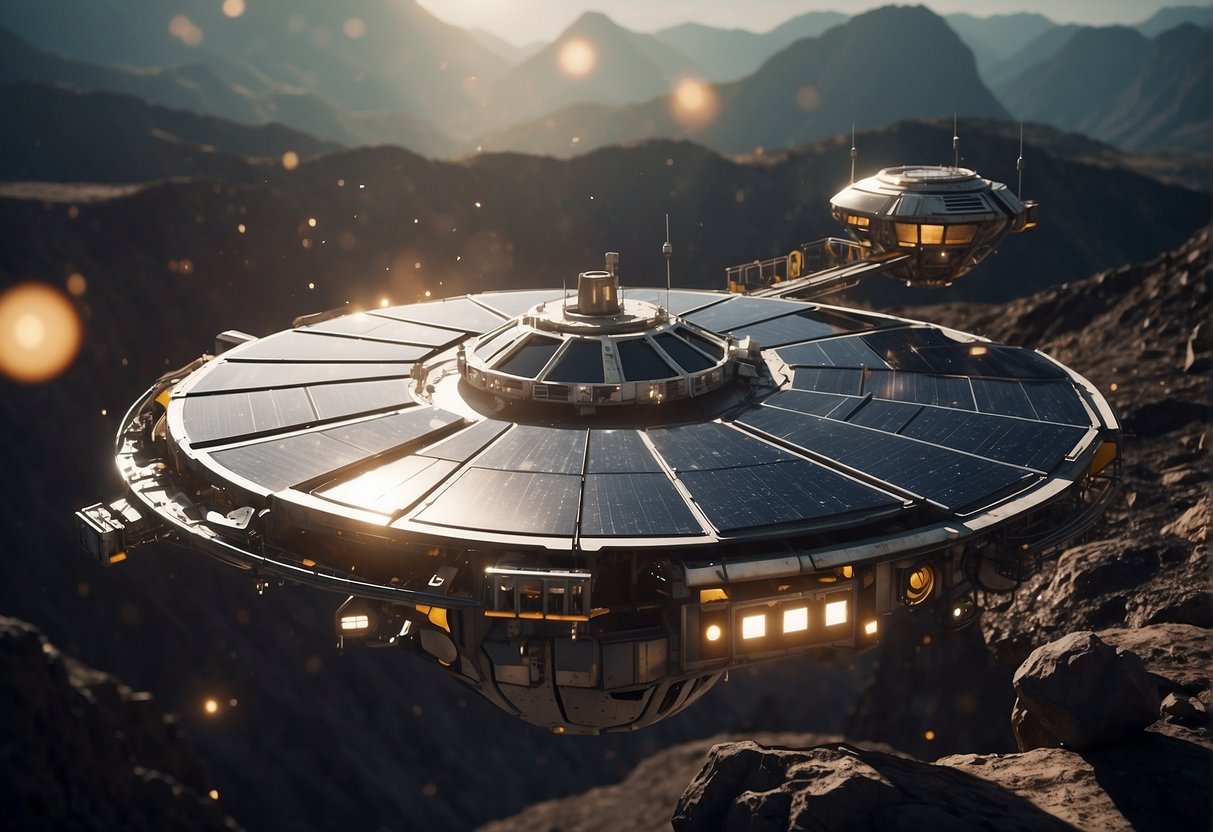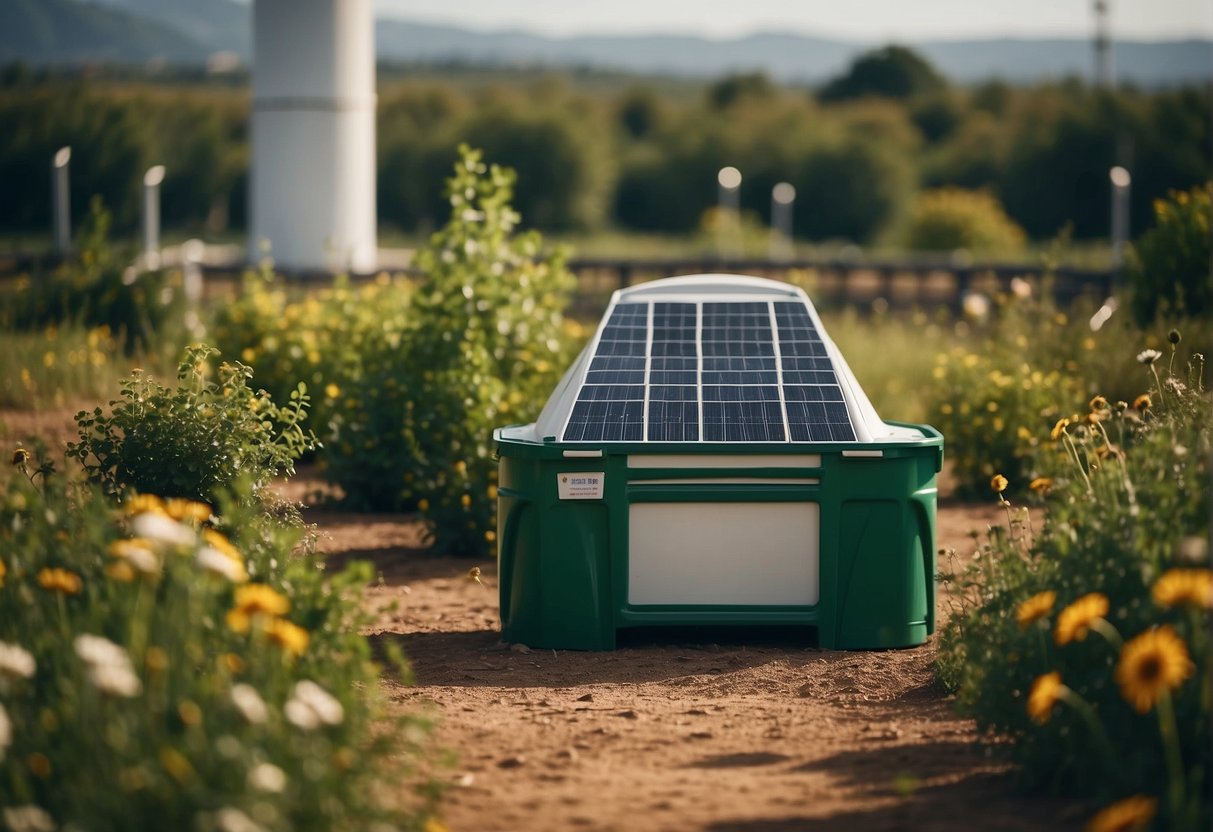
Space and Sustainability: The space industry stands on the precipice of a new era where sustainability is paramount. As humanity expands its footprint beyond Earth, the environmental impact of space activities becomes a topic of global significance. Eco-friendly initiatives in the space industry are seeking to harmonize the pursuit of discovery with the protection of Earth’s orbital environment and overall climate. These endeavors encompass a myriad of practices, from the design of missions with a full lifecycle approach to the active mitigation of space debris.

At the heart of this paradigm shift is the adoption of technologies that could reduce the ecological footprint of launching and operating spacecraft. Agencies and companies alike are investing in innovative solutions to ensure that the space around our planet remains a safe and clean environment for future generations. Collaborative efforts are also underway to develop international policies and guidelines that encourage sustainable practices industry-wide, which may include engaging in fair space resource utilization and considering the economic implications of a sustainable space industry.
In the realm of outer space, sustainability is not just a terrestrial concern; it’s paramount to ensure the longevity of space activities. Eco-friendly practices are critical in safeguarding both the delicate space environment and our home planet’s atmosphere.
The space environment is both vast and vulnerable. It encompasses the absence of atmosphere, extreme temperatures, and the presence of cosmic radiation. Within this environment, the principles of sustainability are vital to preserve the innate conditions of celestial realms and maintain the natural balance. It enables the safe and long-term continuation of space exploration and utilization.
The environmental impact of space activities spans a broad spectrum—from the atmospheric effects of rocket launches to the on-orbital operation of spacecraft. These activities can leave a footprint that disrupts the space environment if not managed with eco-friendly oversight.
Space debris, consisting of the remnants of obsolete satellites, spent rocket stages, and fragments from collisions, poses a significant challenge to both current and future space operations. Approximately 500,000 pieces of space debris are tracked by the Department of Defense’s global Space Surveillance Network, although millions of smaller untrackable fragments also exist.
The potential for Kessler Syndrome, a cascading effect of collisions generating ever more debris, illustrates the need for immediate action. To prevent such a scenario, various mitigation measures including the design of satellites for end-of-life deorbiting, and active debris removal initiatives have been advocated.
Implementing eco-friendly practices in space is essential to ensure the ongoing viability of space exploration, science, and industry. It involves a combined effort to manage the footprint of human activity in space to maintain the pristine nature of the space environment and to protect Earth’s atmosphere from unintentional harm.

The space industry is making strides in adopting eco-friendly practices through international agreements, collaborative efforts, and the establishment of sustainability assessments.
The United Nations, recognizing the importance of a sustainable outer space environment, has facilitated global cooperation. Notably, the Artemis Accords, an international treaty, supports peaceful space exploration with commitments to transparency, interoperability, and the protection of heritage sites, emphasizing sustainable exploration.
Collaboration has been a key factor in sustainability efforts, with government agencies like the European Space Agency (ESA) working with private companies such as SpaceX and OneWeb. Environmentally friendly technologies are at the forefront of their initiatives, aiming to reduce orbital debris and enhance the long-term sustainability of space activities.
The implementation of the Space Sustainability Rating (SSR), developed by a multidisciplinary team, sets benchmarks for sustainable behavior in space. It encourages entities to design and operate their missions to avoid negative impacts on the space environment and Earth, aligning with policies from organizations committed to the SSL guidelines.
The push for sustainable space exploration has led to significant technological advancements. Innovations in satellite technology, debris removal, and in-orbit servicing are at the forefront of creating an eco-friendlier space environment.
Recent breakthroughs in satellite technology are critical to sustainable space endeavors. Ecodesign principles are increasingly being integrated into satellite manufacturing to reduce environmental impact. For example, companies are developing satellites with materials that minimize space debris and are more easily removed from orbit after their missions end. Additionally, the implementation of smaller, more efficient satellites has been a game-changer, reducing the cost and rocket emissions associated with launches.
The concern over space debris has led to the innovation of active debris removal (ADR) systems. Startups like Astroscale have been pioneering technologies to address the growing issue of orbital debris. They have developed spacecrafts equipped with magnetic docking plates to safely remove defunct satellites and other debris from orbit. This active cleanup is vital for preserving valuable orbital pathways and mitigating the risks of space collisions.
In-orbit servicing and maintenance is a transformative approach to extend the life of satellites and other space assets. Innovative in-orbit servicing technologies are being tested that can refuel, repair, and reposition satellites, dramatically enhancing their longevity and functionality. This not only benefits the long-term sustainability of satellites but also reduces the frequency of launches, which has substantial environmental and financial benefits.
The expanding frontier of space exploration brings with it concerns about the environmental impact of activities beyond Earth’s atmosphere. Two significant areas of impact involve the emissions generated by rockets and the sustainability of missions in Earth’s orbit.
Rockets, essential for space launches, emit a range of gases and particles into the Earth’s atmosphere, including greenhouse gases. These emissions contribute to climate change in several ways. The water vapor and alumina particles released into the stratosphere can lead to warming while black carbon aerosols can disturb atmospheric composition. Meanwhile, rocket propellants often release chlorine and other compounds that may affect ozone levels.
The health of Earth’s orbit is also a prime concern. Satellites and debris crowding the orbital lanes pose a significant environmental risk. Sustainable missions focus on minimizing space debris through better end-of-life practices for satellites and promoting guidelines for debris mitigation.
In the realm of space exploration, the integration of eco-friendly practices throughout the lifecycle of space missions is becoming increasingly significant. This approach necessitates not only a detailed Life Cycle Assessment (LCA) but also the adoption of Eco-Design principles in the construction of spacecraft to minimize environmental impacts.
The trajectory of a space mission is meticulous, starting with intricate planning and culminating in careful decommissioning. It begins with mission planning, where environmental impacts are considered and minimized from the onset. The entire life cycle of the mission is analyzed to assess various factors such as potential space debris generation and emissions impacting Earth’s atmosphere. As missions advance, ongoing LCA helps to monitor and manage the ecological footprint, leading to strategies for decommissioning that aim to reduce orbiting debris and potential harm upon re-entry to Earth.
Eco-Design in spacecraft manufacturing merges environmental consciousness with engineering innovation. This means that from the design phase, space missions are envisioned with sustainability in mind, selecting materials and processes that lower the ecological impact. During manufacturing, the focus includes the utilization of green technologies and practices that reduce waste and energy consumption. This proactive Eco-Design approach contributes to the overarching goal of conducting space missions while fostering sustainable development within the space industry.

The space industry is steadily moving towards the practical utilization of space resources. Off-Earth mining, particularly on the Moon and asteroids, offers potential for sustainability in space operations and a reduction in Earth-bound resource dependency.
The Moon presents a valuable opportunity for mining due to its proximity to Earth and the presence of various resources, such as water ice and rare earth metals. Ice deposits in shadowed lunar craters can be vital for sustaining life and fueling spacecraft. Mining missions are also focusing on asteroids, which are rich in minerals and metals. These celestial bodies could be key in building and maintaining structures in space, thereby decreasing the need for materials from Earth.
Efforts in asteroid mining envision extracting resources such as platinum and water. The latter can be split into hydrogen and oxygen, essential for rocket fuel, making long-duration space missions more viable. Entities like NASA and private companies are assessing technologies for resource extraction techniques that can operate in the low-gravity environments of the Moon and asteroids.
The concept of mining celestial bodies comes with ethical questions and the need for planetary protection policies. As these initiatives move forward, it’s crucial to balance economic interests with the preservation of the space environment.
Regulations and Treaties:
Key Ethical Concerns:
The space community is actively discussing frameworks for responsible mining practices. International cooperation and transparent guidelines are essential in ensuring that off-Earth mining supports both sustainability in space operations and the protection of celestial environments.
In the arena of outer space, as on Earth, sustainability has become a pressing concern. The focus on space debris mitigation has led to cooperative strategies designed to minimize and manage the waste orbiting our planet.
International collaboration is key in the quest to reduce space debris. Programs like the Zero Debris 2030 initiative, driven by the European Space Agency (ESA), aim to curtail the growth of space debris by the end of the decade. This strategy is supported by the Zero Debris Charter, which encourages a collective, international pledge towards space sustainability.
Various governments have recognized the critical need for space debris mitigation, not only to preserve operational satellites but to maintain a safe environment for future space activities. Frameworks have been developed to guide nations in best practices for debris reduction, ensuring that each space-faring entity contributes to the overall health of the near-Earth expanse.
The rise of commercial space companies adds layers of complexity to the debris dilemma. As corporate entities such as SpaceX and Blue Origin surge ahead, their responsibility towards debris removal grows commensurate with their presence in space. Innovations like active debris removal (ADR) systems demonstrate industry commitment to sustainability.
Corporate engagement doesn’t operate in a vacuum; it requires synchronization with international guidelines and a synergy with governmental efforts. Tensions between competitive interests and collaborative needs introduce diplomatic challenges, yet the shared dangers posed by space debris push for unified actions. In the race for cosmic expansion, the space community is reminded that cooperation is not just prudent but a critical need for the continuation of space exploration.
With a fresh focus on environmental responsibility, the sustainable space industry presents flourishing economic potential and dynamic job markets centered around innovative technologies and enhanced space accessibility.
Key Economic Drivers: The transition to a sustainable space economy has unlocked new market opportunities. Business models that once seemed part of a distant future, such as space-based solar power and asteroid mining, are gradually becoming feasible, offering promises of abundant energy and resources. This growth in the sector is fueled by advancements in space accessibility, breaking down barriers that once limited space activity to a few government-funded organizations. Now, commercial entities are regularly launching satellites that support a variety of services, from global telecommunications to Earth observation, which fosters greater connectivity and surveillance capabilities.
Innovation Ecosystem: There’s a burgeoning ecosystem of startups and established companies investing in sustainable technologies to make space more accessible. Reusable launch vehicles are a prime example of such innovations, reducing the costs and increasing the frequency of space launches. Moreover, collaboration between the public and private sectors has been instrumental in fostering an environment where SMEs can participate alongside large corporations in the ever-expanding space sector.
Diverse Job Market: The ripple effects of a growing sustainable space industry are manifesting in the job sector, spanning from engineers and scientists to legal experts and policy-makers focused on space law and sustainability. The commitment to eco-friendly space exploration is necessitating a workforce that’s not only technically skilled but also versed in sustainable practices.
Skills and Education: To support this burgeoning industry, educational institutions are developing tailored programs that align with space sustainability needs, thus ensuring a steady pipeline of professionals ready to contribute to this enterprising field. Employment opportunities are widespread, and they integrate the varied aspects of the space industry, including research and development, manufacturing, and systems management. These jobs not only stimulate the economy but also contribute to the momentum needed to address sustainability in a sector that’s critical for the future of humanity’s presence in space.

This section addresses common inquiries into sustainable practices in the rapidly evolving space industry.
Space agencies are actively pursuing strategies such as eco-friendly fuel alternatives, reducing rocket emissions, and enhancing reusable launch vehicle technology. These initiatives aim to minimize the ecological footprint of space explorations both on Earth and in space.
The Space Sustainability Rating serves as a benchmarking tool to incentivize satellite operators to adopt sustainable practices. It encourages the reduction of space debris through responsible satellite design and disposal, thereby promoting long-term sustainability in space operations.
Companies are investing in technologies that provide Earth observation data to monitor climate change and support environmental protection initiatives. Additionally, advancements in space-based solar power potentially offer a sustainable energy source for future generations.
Innovative technologies such as robotic arms for debris removal, nets, and harpoons are being developed to securely capture and dispose of space debris. Active debris removal missions and harsher guidelines for debris generation are crucial for maintaining the space environment.
International policies and agreements, like the creation of Protected Return Zones and the Outer Space Treaty, set a framework that govern member nations to conduct space operations responsibly. They promote transparency and cooperation in minimizing space debris and environmental impacts.
Agencies and corporations are focusing on measures such as lightweight structural materials to reduce launch mass, solar electric propulsion systems, and precision manufacturing to conserve resources and energy. These methods also help to lower the emissions related to space flight.